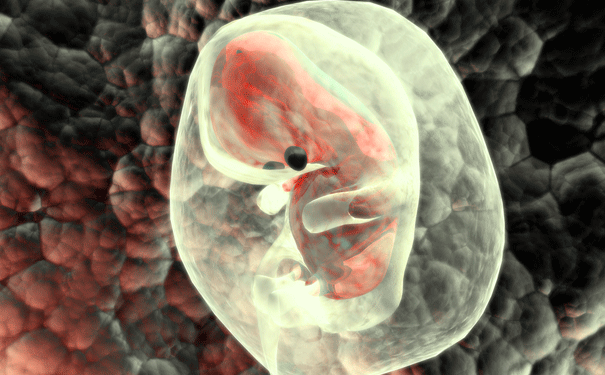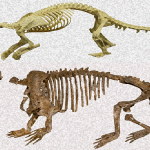
A human embryo after limb formation has taken place. Image: Shutterstock
The shape of our bodies is determined in less than two days.
The placement of a living organism’s limbs is determined within 48 hours during the early development of the embryo. The embryo will grow one segment at a time, from top to bottom, with a new segment forming every 90 minutes.
This mechanism is shared by a wide range of living beings, including insects, mammals, reptiles and some species of worms, but the precise mechanism that controls this formation has remained a mystery. Now scientists at Ecole Polytechnique Fédérale de Lausanne (EPFL) and the University of Geneva (Unige) have uncovered the mechanism.
“We assumed that the DNA played the role of a kind of clock. But we didn’t understand how,” said EPFL and Unige professor Denis Duboule, one of the authors of the study published in the journal Science.
The process is determined by ‘Hox’ genes, which are responsible for the formation of the limbs and the spinal cord. These genes are initially packaged in a dormant, coiled strand, which begins to unwind as the embryo forms.
“Hox genes are situated one exactly after the other on the DNA strand, in four groups. First the neck, then the thorax, then the lumbar, and so on,” Professor Duboule said. “This unique arrangement inevitably had to play a role.”
As the upper segments of the embryo form, the genes encoding the formation of cervical vertebrae and deliver specific instructions. This process is then repeated for the thoracic vertebrae.
“A new gene comes out of the spool every ninety minutes, which corresponds to the time needed for a new layer of the embryo to be built,” Professor Duboule said. “It takes two days for the strand to completely unwind; this is the same time that’s needed for all the layers of the embryo to be completed.”
The genes for each segment become activated at exactly the right moment and in the right order. “If the timing is not followed to the letter, you’ll end up with ribs coming off your lumbar vertebrae.”
The snake is a perfect illustration of this process, according to Professor Duboule. A few years ago, he discovered a defect in the Hox gene that would normally stop the vertebrate making process.
“Now we know what’s happening. The process doesn’t stop, and the snake embryo just keeps on making vertebrae, all identical, until the process just runs out of steam.”
Source: Physorg.






